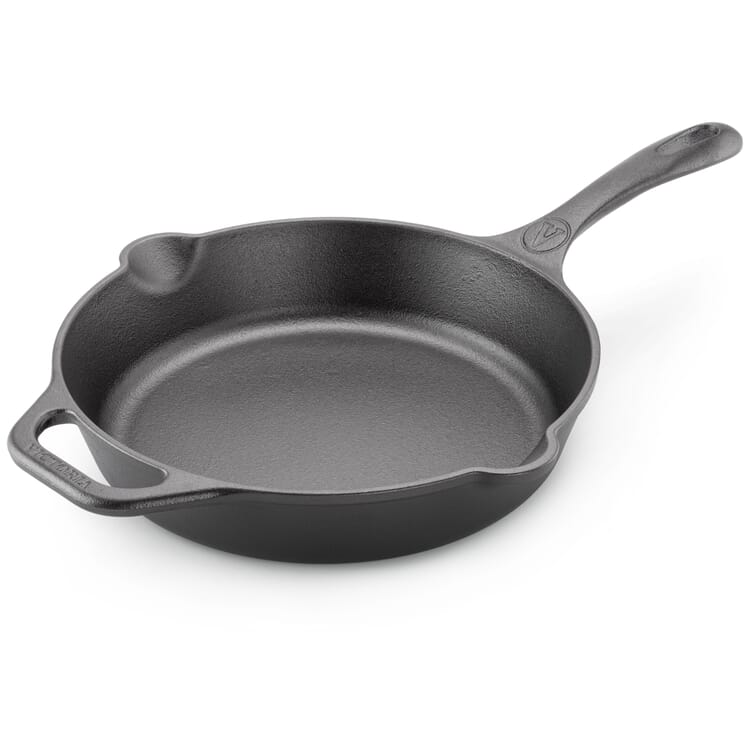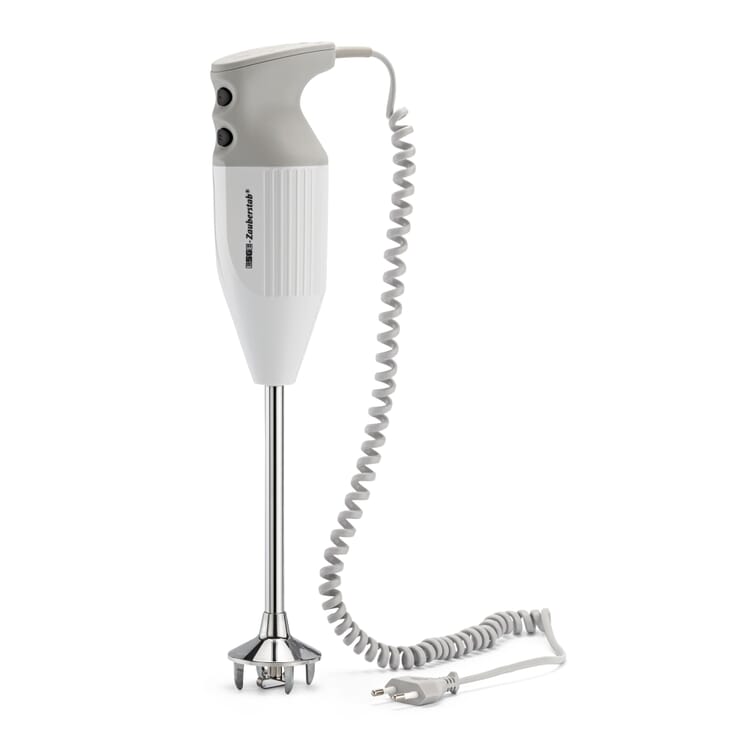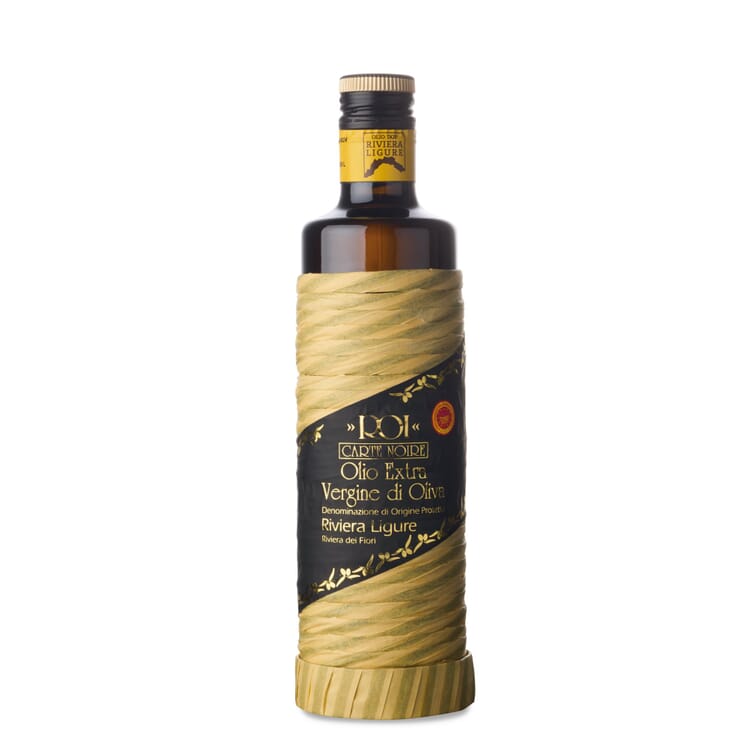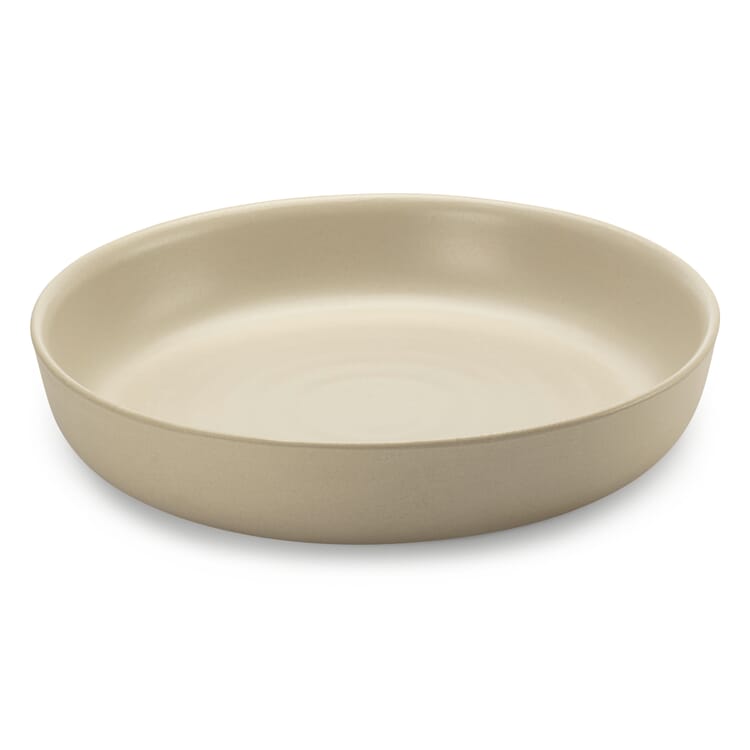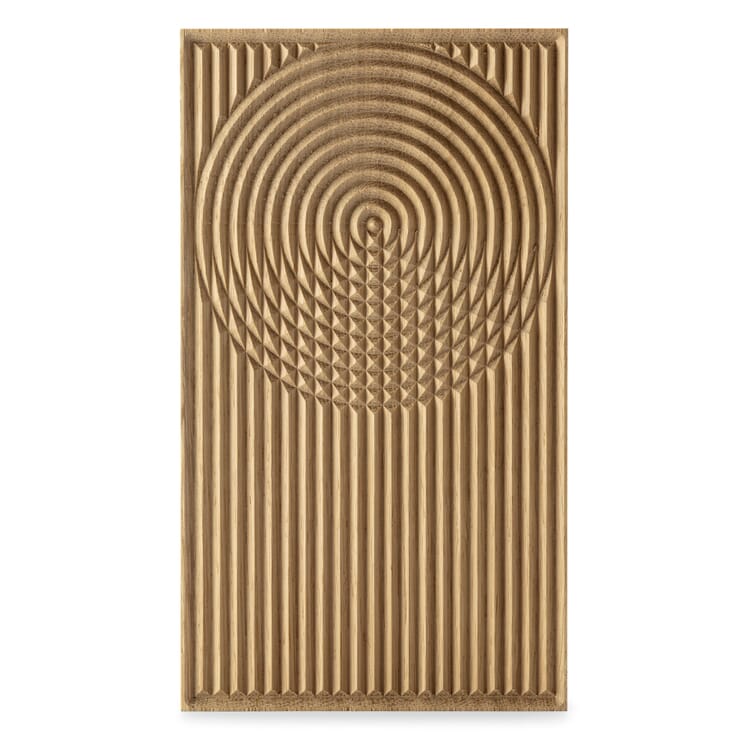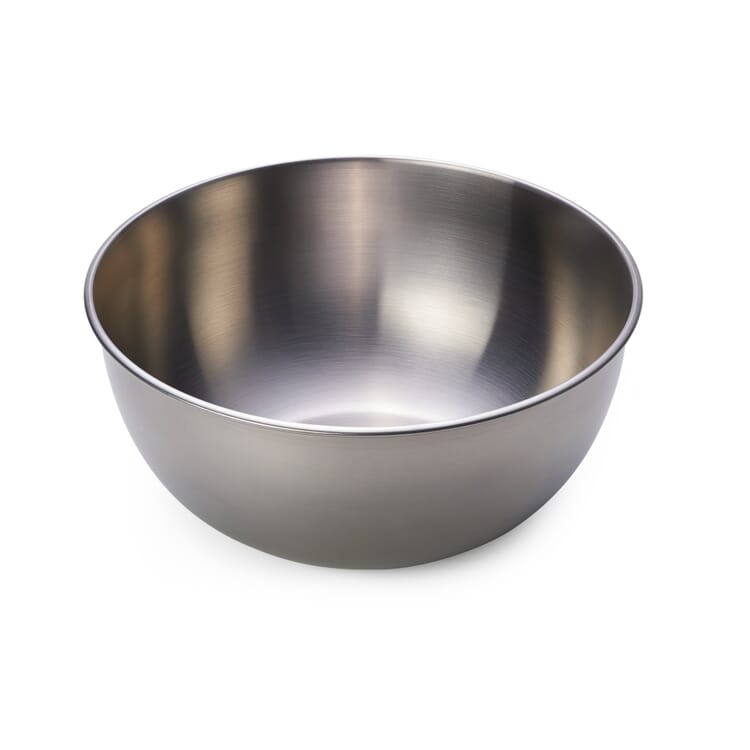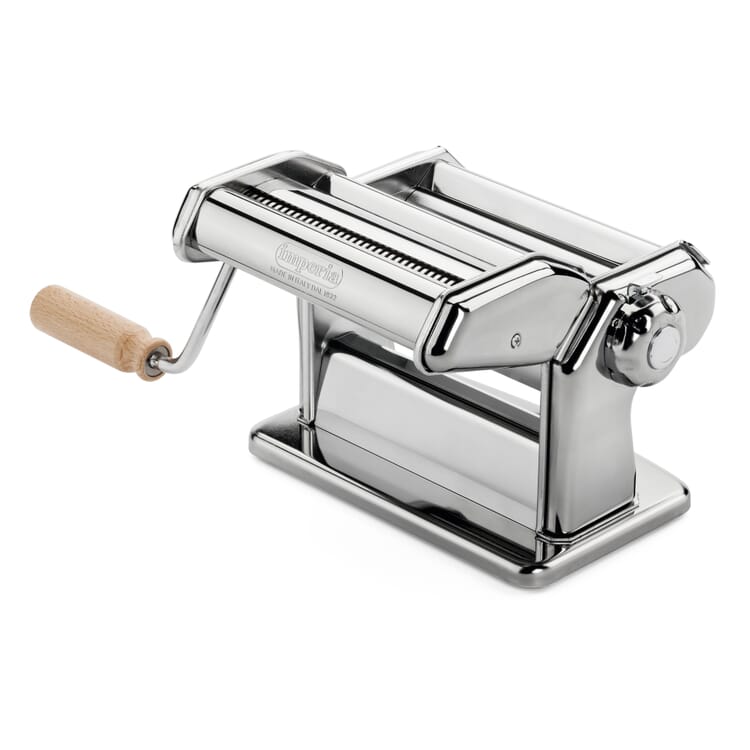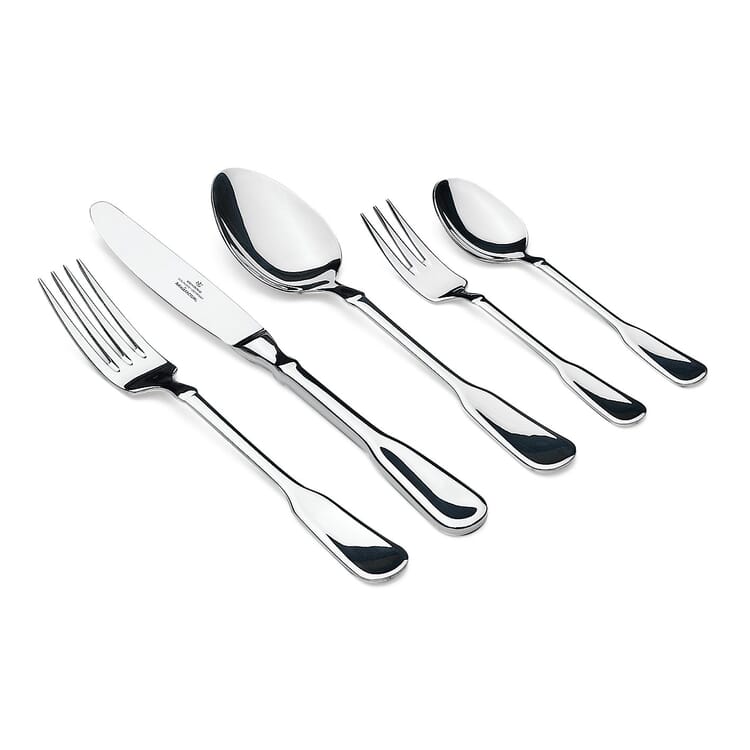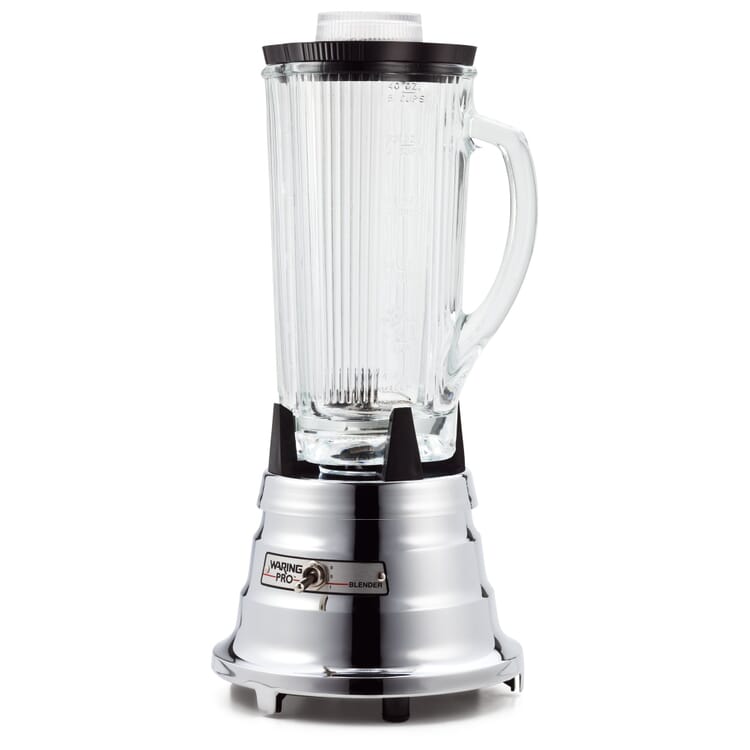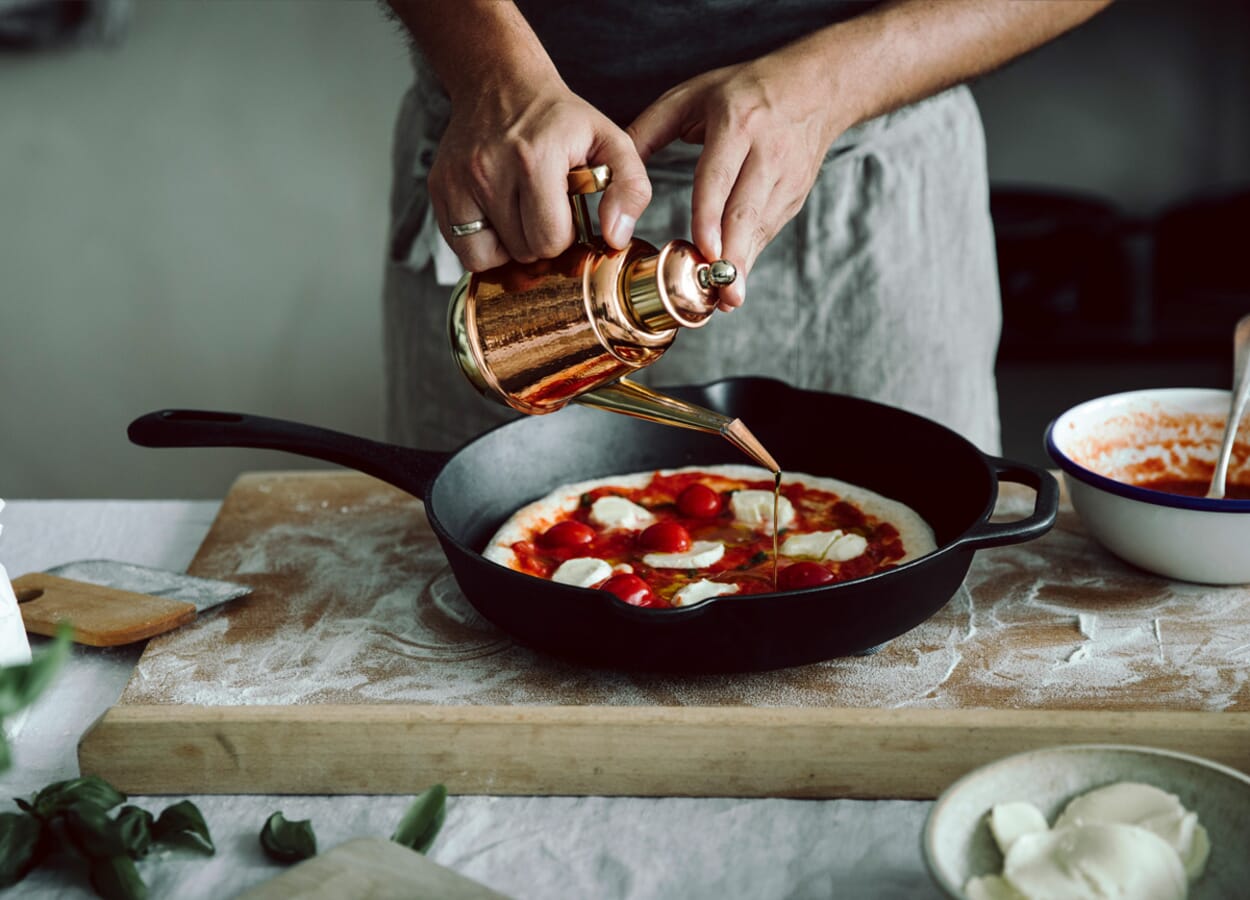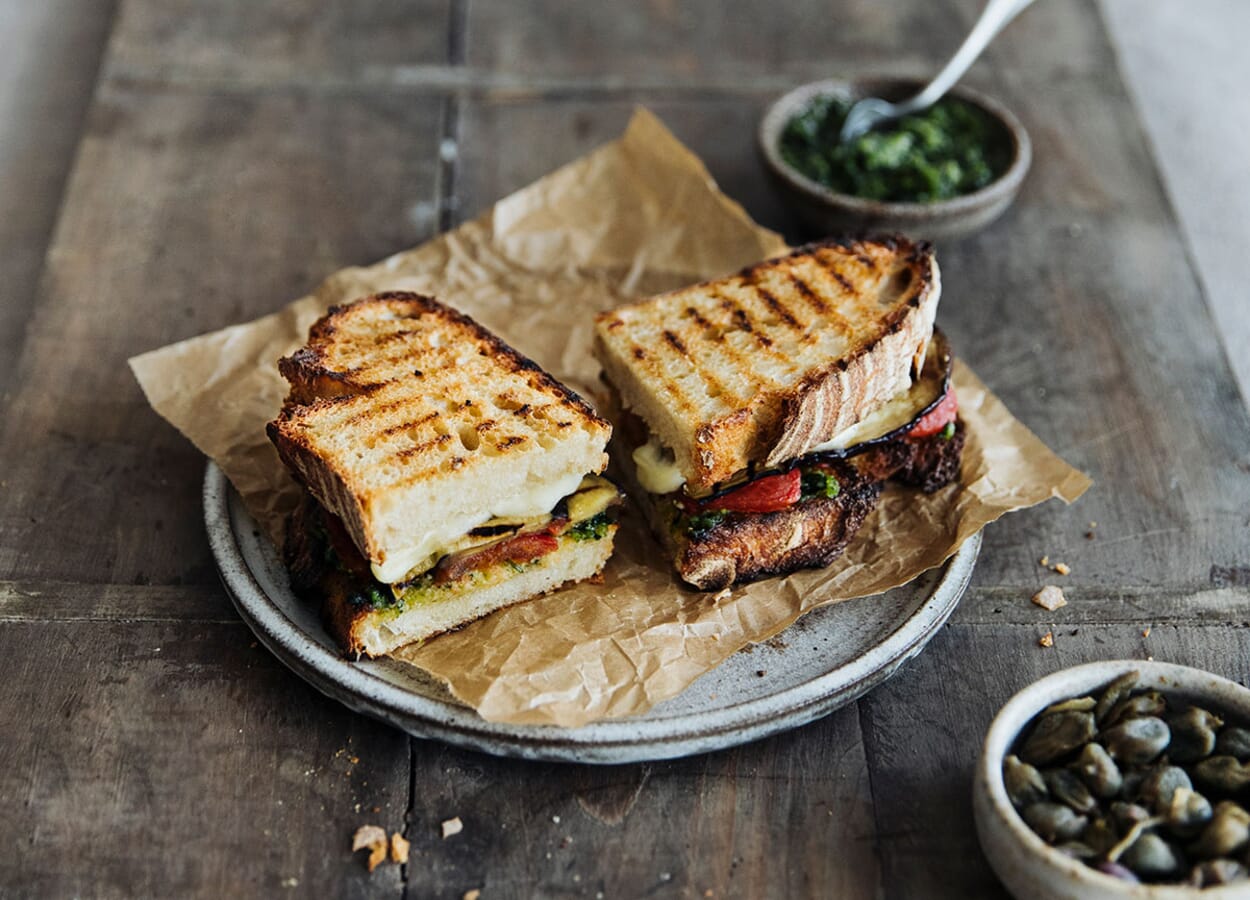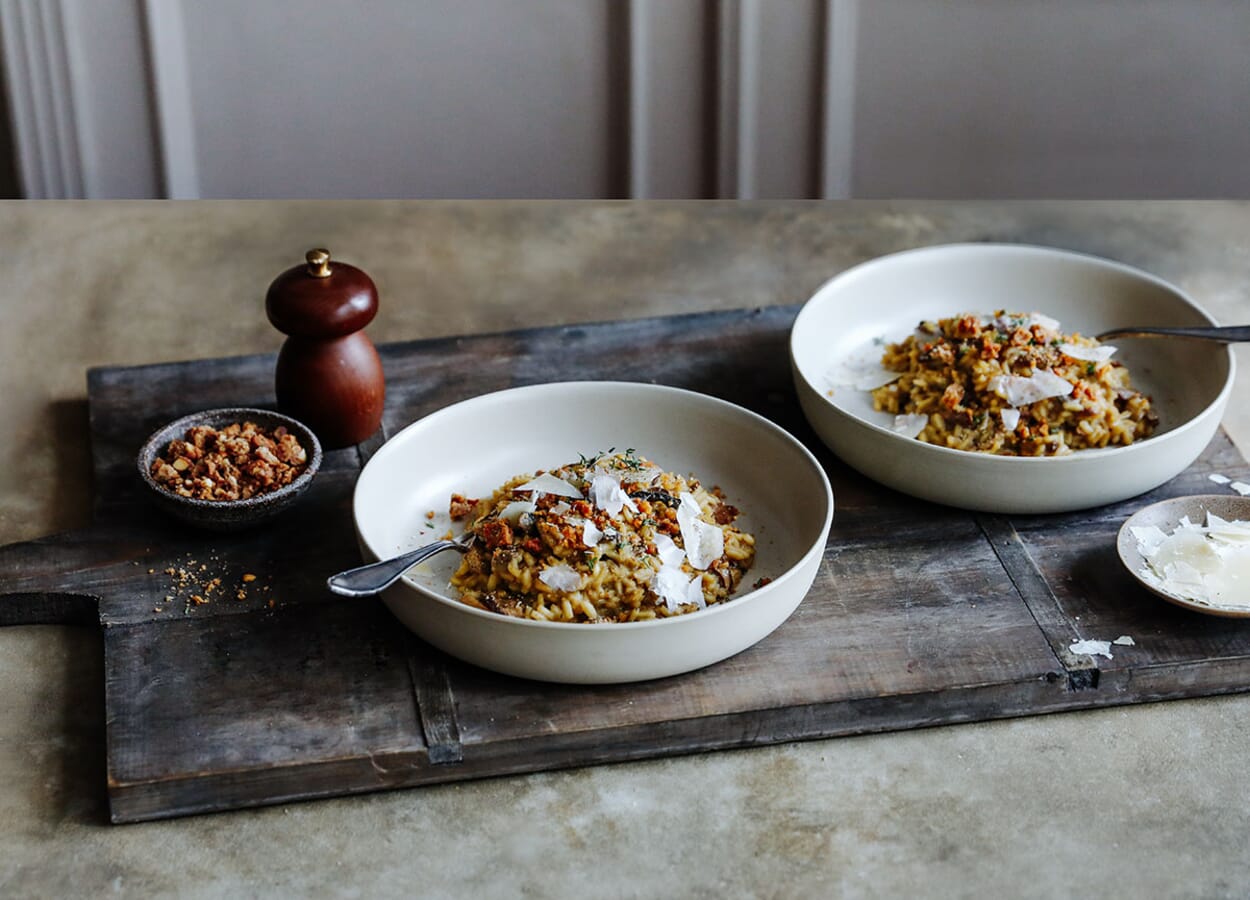Recipes
Homemade pasta with kale pesto
Mallureddus or gnocchetti sardi are a typical Sardinian pasta shape. They originate from the Medio Campidano region in the south of the island. The recipe is simple: Mallureddus are made from durum wheat, water and a touch of olive oil. It is believed that their name is of Latin origin. "Mallolus" means something like a ball or mass of dough - a dumpling or dumpling. They are characterized by their shell shape with deep grooves on the outside, which absorb any kind of sauce particularly well. Traditionally, baskets made of straw or raffia, the su ciuliri, are used to shape the pasta. This is where we use our untreated oak pasta board, which is a more than worthy carved substitute. Brings color and vitamins to your plate in winter: the ready-mixed kale pesto that we serve with the mallureddus.
The ingredients for 2 portions
For the pasta:
200 g durum wheat flour or semolina
180-200 ml lukewarm water a little olive oil a pinch of salt
If you don't want to make the pasta for this dish fresh, dried pasta from our Cavalieri range is a good alternative.
For the pesto:
200 g kale (cleaned and weighed)
100 ml olive oil
1 clove of garlic
Juice of ½ organic lemon
50 g Parmigiano Reggiano delle Vacche rosse
70 g walnuts
Pepper, salt, chilli to taste
Also freshly grated Parmesan cheese to serve
Recommended products for preparation
The preparation
To make the pesto, first wash and pluck the kale. Place the plucked leaves in a food processor with the olive oil, garlic and lemon juice and blend until a creamy consistency is achieved. Alternatively, you can use your hand blender for this preparation step or puree the ingredients in a mortar, as is customary in Italy. Finally, add the walnuts and Parmesan and blend or mortar everything again. Season to taste with salt and pepper. Tip: If you like it spicier, add one or two dried chilli peppers before blending. For the pasta, knead the flour with water, olive oil and a pinch of salt to form a smooth dough. Shape the dough into a ball, cover and leave to rest for about half an hour. Remember: you may not need the full amount of water specified in the list of ingredients. This depends, among other things, on whether you are using durum wheat semolina or flour or a mixture of the two. So our tip: add the lukewarm water in small sips and gradually work it into the dough. This way, you have the consistency of your pasta dough under control in the truest sense of the word and can ensure that it does not become too moist overall and can then no longer be processed easily. Making the mallureddus starts with cutting an approx. 1 cm thick slice from the ball of dough. Roll this into a finger-thick strand, which you then divide into 1 cm pieces - small pillows of dough. With the help of a pasta board and a little dexterity, the dough cushions are then shaped: to do this, roll the pieces individually on the board, pressing them in firmly with your thumb. To prevent them from sticking together, place the finished pasta on a floured kitchen board or baking tray until ready to cook. Continue in this way until the entire ball of dough has been used. And don't forget: In the meantime, keep the dough ball covered so that it doesn't dry out. Finally, cook the mallureddus al dente - this only takes two to three minutes - drain and mix with the pesto in a large bowl or pan while still hot. The pesto will become a creamy sauce if you take the opportunity to collect some of the pasta cooking water and mix it in. Arrange on plates and serve with freshly grated Parmesan cheese. buon appetito!



